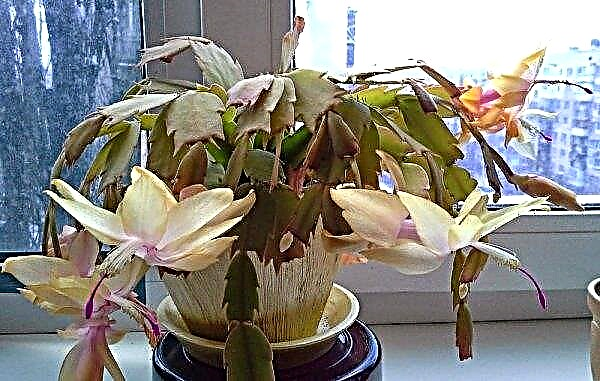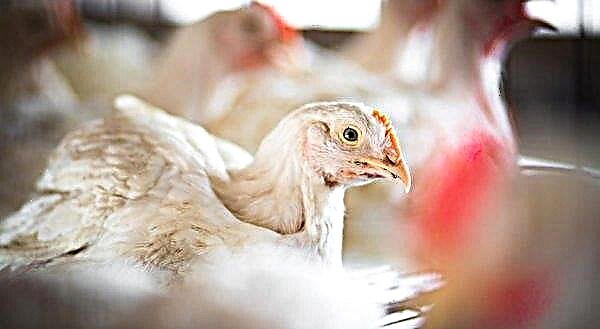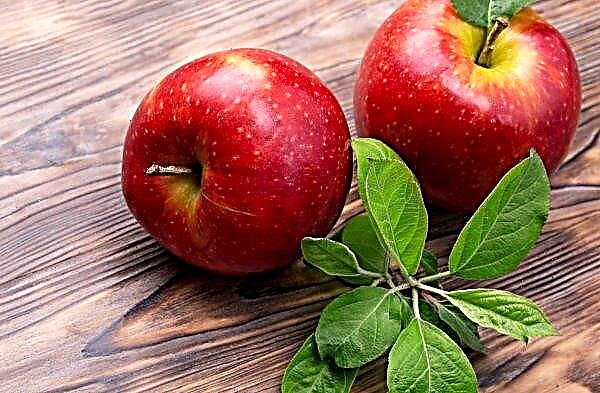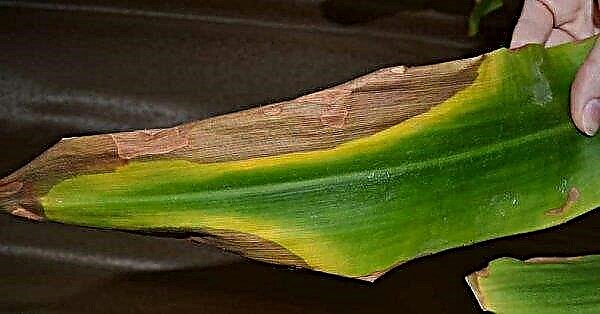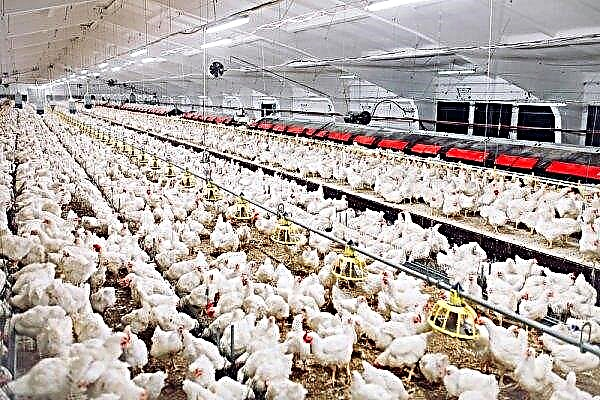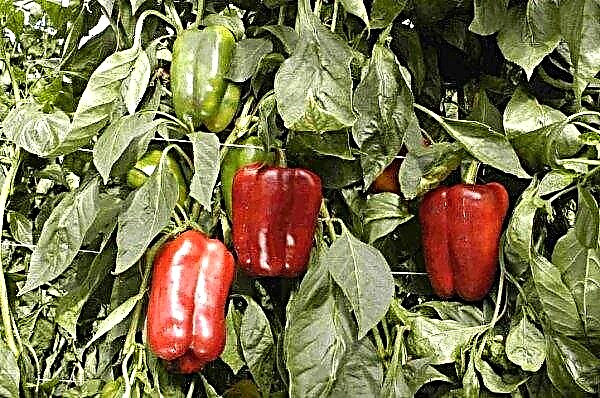Watermelons are grown in two ways - by growing seedlings from seeds and sowing seed material directly into the ground. Experienced gardeners and specialists recommend germinating the seeds before planting. Recommendations on how to do this correctly and quickly are described below.
Do I need to germinate watermelon seeds before planting
Germination of seed is not a mandatory procedure. It is necessary if the owner of the melon wants to accelerate the process of plant development and get an earlier crop. Fruits of a plant culture, whose seeds were germinated before planting, ripen 2-3 weeks earlier than pumpkins grown from non-germinated seed material.
Did you know? When excavating the tombs of the Egyptian pharaohs, the remains of watermelons were often found. The fruits were buried with the bodies, believing that their rulers would eat in the afterlife.
The advantages of the method include the fact that even at the stage of emergence of the sprouts, the strongest ones can be selected, from which strong plants will be grown that give high-quality fruits, as well as get friendly seedlings and achieve almost 100 percent germination. However, to achieve this result is possible only in the case of proper germination.

How to germinate watermelon seeds at home
Sprouting seed material at home is not difficult for any person. The main thing is to conduct preparation, create the correct temperature regime and periodically inspect seedlings. Preparation is carried out in several stages. First you need to discard the seeds.
The largest and strongest specimens are selected for sowing. Then you need to place the selected material in a saline solution (1 tbsp. L. Salt / 0.5 tbsp. Water). For planting, only those specimens that remained at the bottom should be selected. Surfaced to the surface you need to throw out.
Important! For sowing, you should choose the seeds of those varieties of watermelons that are suitable for growing in your climate zone.
The tested seed must be washed in clean water and dried. If the seeds are collected with your own hands or purchased from your hands, they must be decontaminated. This is necessary to prevent the development of various diseases. Disinfection is carried out in a solution of potassium permanganate (1 g / 100 ml of water) for 20 minutes. At the end of the procedure, washing in clean water and drying will be necessary.
To accelerate germination, you can put the seed in another solution - “Heteroauxin”. This procedure is lengthy - it takes 10 hours. It allows you to saturate the seeds with minerals that are needed for the fastest growth and development of gourds. It ends with complete drying.

After such careful preparation, germination follows. First, the seeds are placed in water heated to + 45 ... + 50 ° C. This will make the top layer softer. Seeds are scattered on wet gauze, folded in several layers, and placed in a flat glass container, which is placed in a warm place, covered with a film. During germination, gauze is regularly moistened.
The time from planting to germination of watermelon seeds
Of course, every person trying to sprout watermelon seeds is interested in the question: what day do they sprout. Usually, subject to all conditions and recommendations, the first hatching sprouts can be seen after 5-7 days. The process will be more lengthy if you skip soaking in warm water at the preparation stage. You can accelerate germination if you gradually increase the temperature.
What to do if watermelon seeds do not germinate
Germination may not occur for several reasons:
- placing the seed in unsuitable temperature conditions;
- the skin of the seeds is too thick, due to which the sprouts can not break out;
- too low humidity in the germination tank;
- overdrying gauze;
- selected seed material that is overdried or has expired.
Important! The shelf life of purchased watermelon seeds when stored in a fabric bag, lack of moisture and a cool temperature is 6–8 years.
How to plant sprouted seeds
Germinated seed material can be used for growing seedlings and for sowing on open beds. It is important to plant carefully and carefully, as awkward movements can damage the sprout.
Planting seedlings
Sowing for growing seedlings is carried out in mid-April. The exact time can be determined by the height of the sprout emerging from the seed - it must be at least 1 cm. For this process, you will need to prepare one long and flat container or several small containers, for example, plastic cups, peat pots.

A soil substrate that meets several requirements will also be needed. It should be light, loose, nutritious, well-conducting moisture and oxygen. It can be purchased at a specialized store or cooked at home by mixing peat, humus and sand (1: 1: 0.5). To the prepared mixture should be added wood ash (2 tbsp. L / 1 l of the mixture).
Sowing technology is as follows:
- Fill the soil mixture with tanks ¾ of the total volume.
- Spread the seeds with tweezers - 1 pc. in each pot or in one container with 1.5 cm intervals.
- Sprinkle with soil substrate to a height of 2-3 cm.
- Moisturize with warm water from a spray bottle.
- Install containers in a room where the temperature is maintained at + 25 ... + 27 ° С. After shoots appear, the daytime temperature can be lowered to + 20 ... + 25 ° С, and the nighttime - to + 18 ... + 20 ° С.

Crop care involves moistening with warm water, fertilizing fertilizers. Seedlings are planted in open ground not earlier than mid-July.
Outdoor landing
Sowing seeds on open beds is done when the earth warms up to + 16 ° C. The embedment depth is 6 cm. Planting density is 10 seeds per 1 running meter. Seeds with tweezers are laid out in grooves on the beds, sprinkled with earth and watered. Seedlings should be expected after 7-10 days. If the shoots sprout well, then they need to be thinned.
Tips from experienced gardeners
For a successful landing, we recommend using the advice of experienced gardeners:
- Select for cultivation in open beds an area illuminated for a long time during the day by the sun's rays and sheltered from drafts.
- Groundwater should be located no closer than 2.5 m to the soil surface.
- Keep in mind that the best harvests of watermelons give when planting in light sandy and sandy loamy soils.
- Before planting, soil acidity should be measured and brought to a pH of 6.7–7.
- It is important to adhere to crop rotation rules and sow watermelons in the beds where wheat and alfalfa previously grew. Sowing should be excluded in areas where melons and solanaceous crops were cultivated.

So, the process of germination of watermelon seeds can significantly improve productivity and accelerate fruit ripening. When conducting it, it is important to adhere to the recommendations in order to do everything correctly and achieve the desired results.

